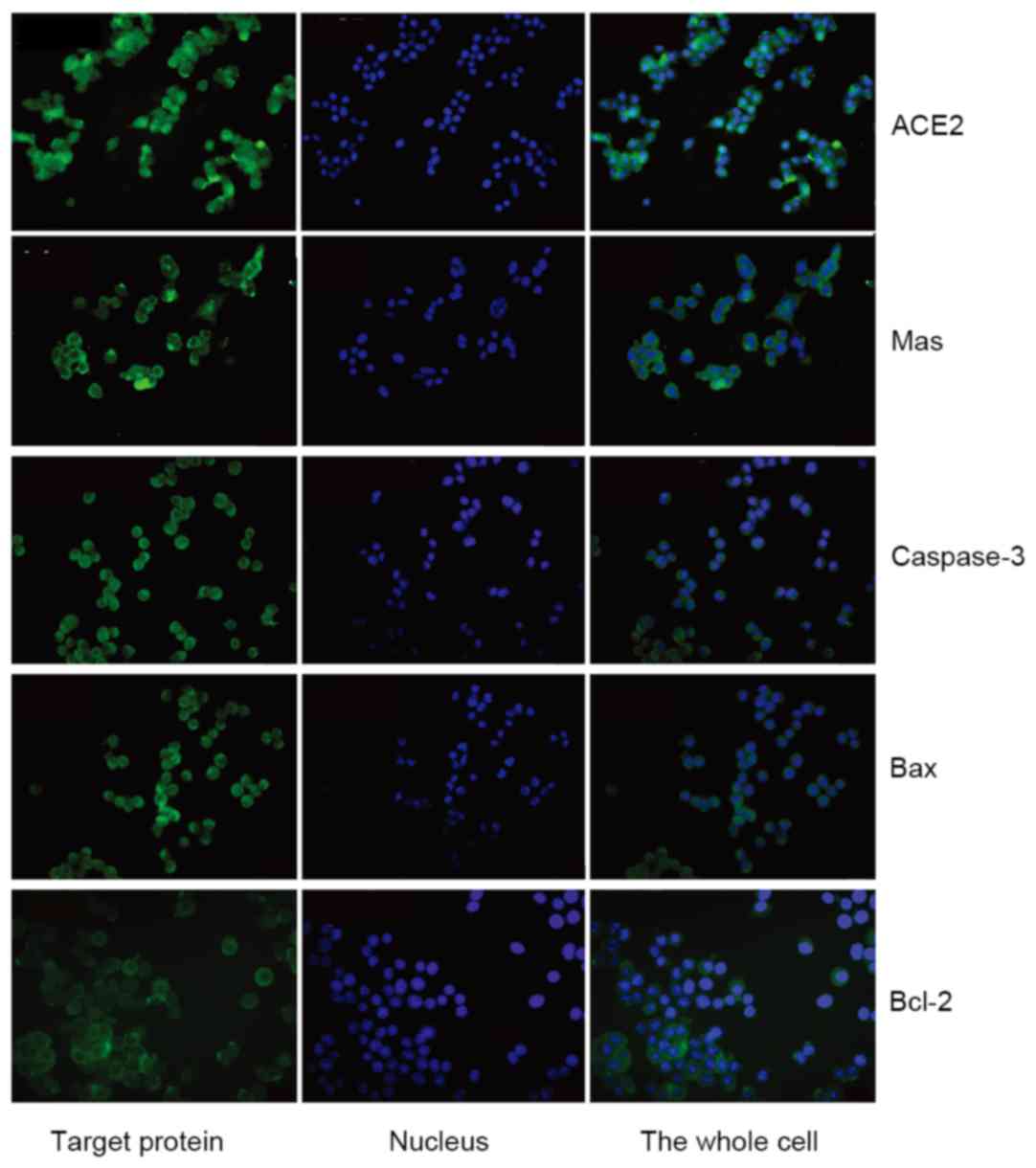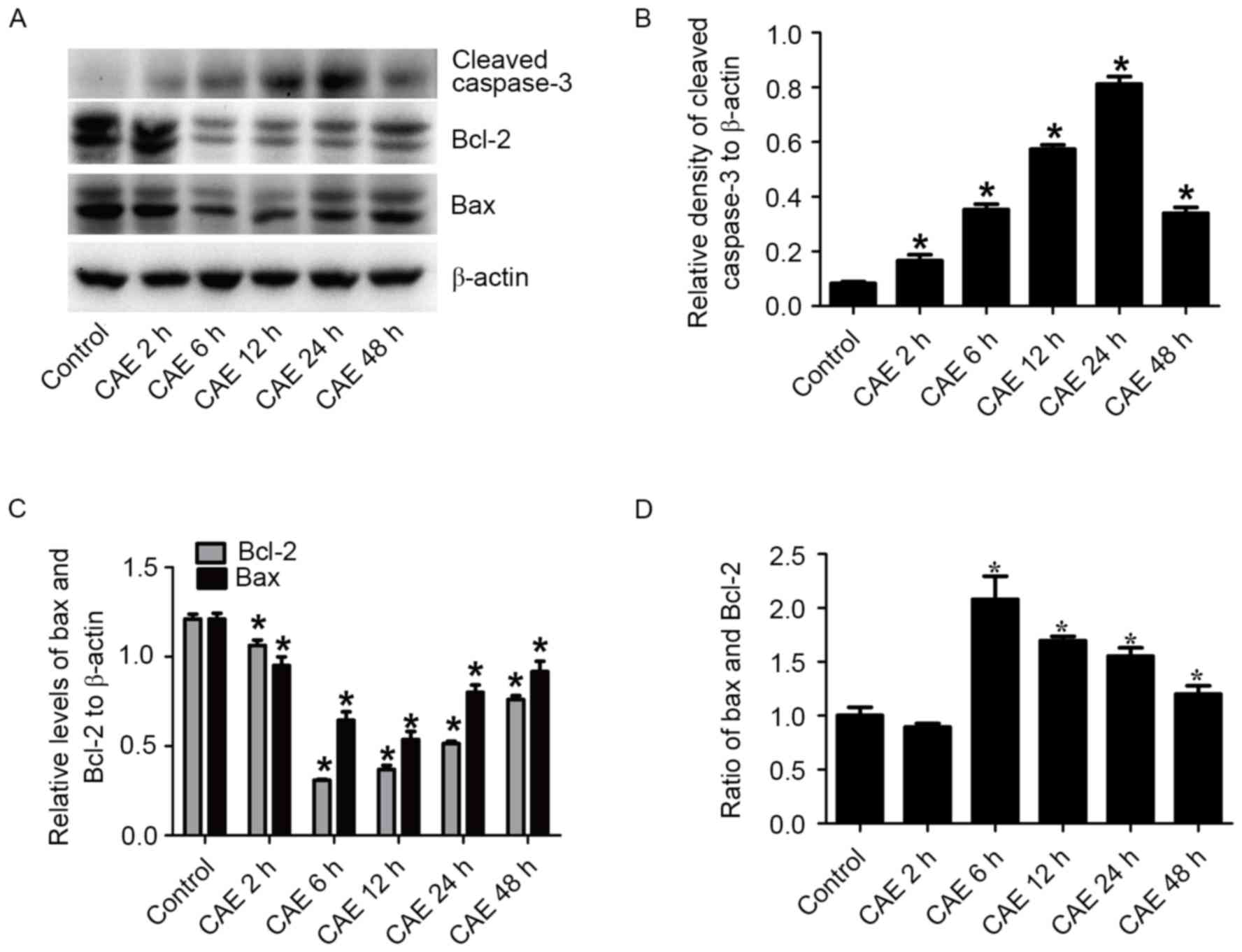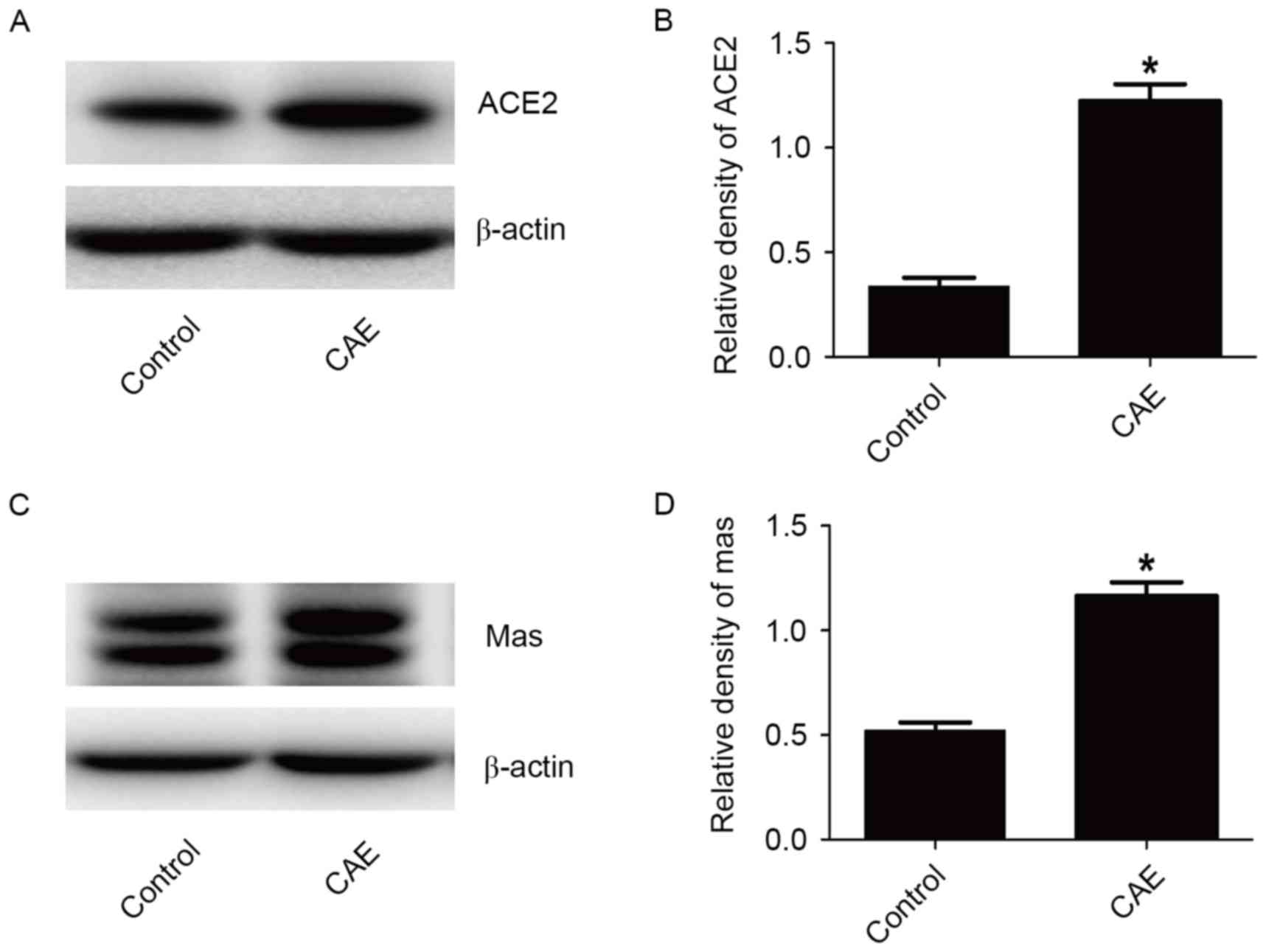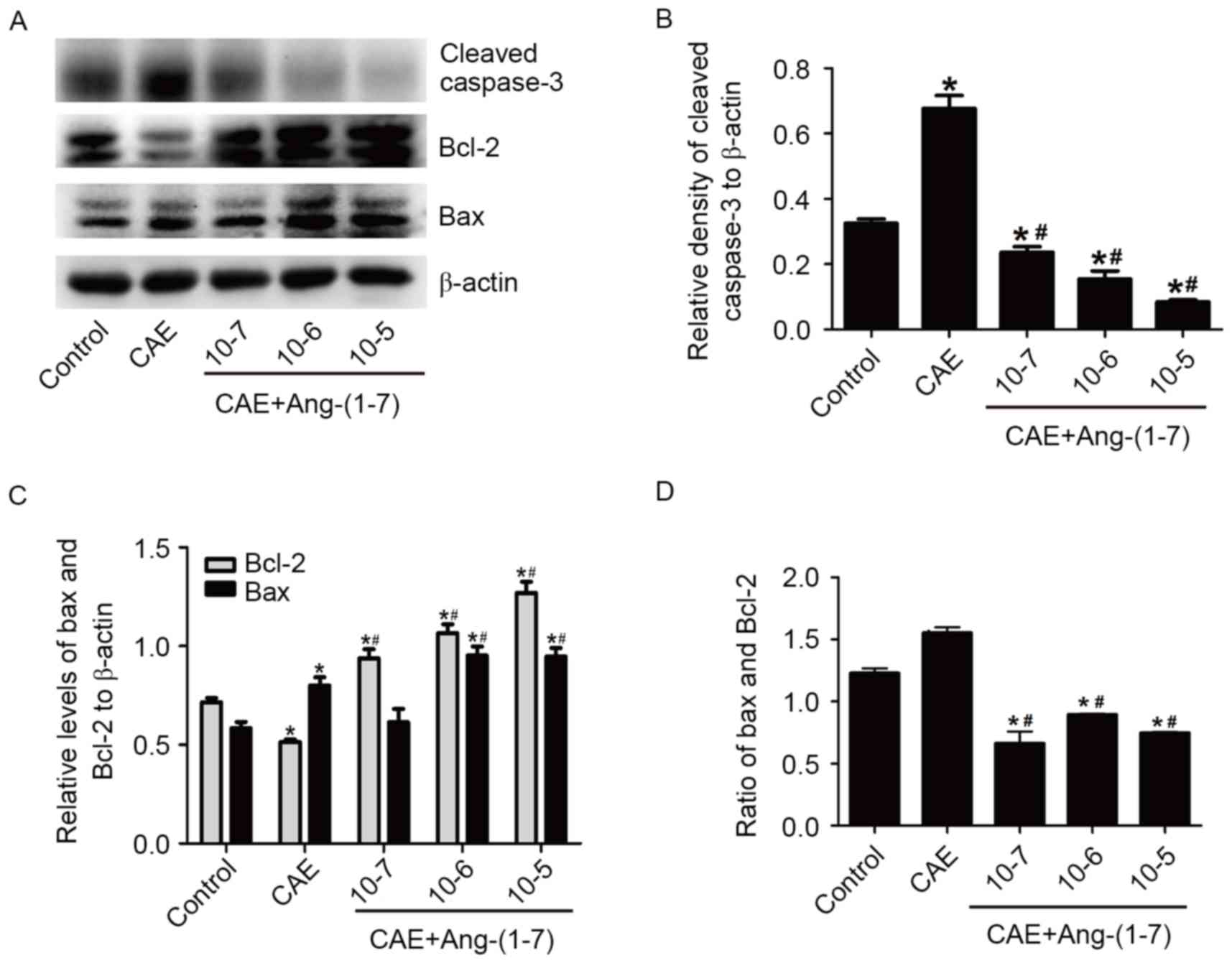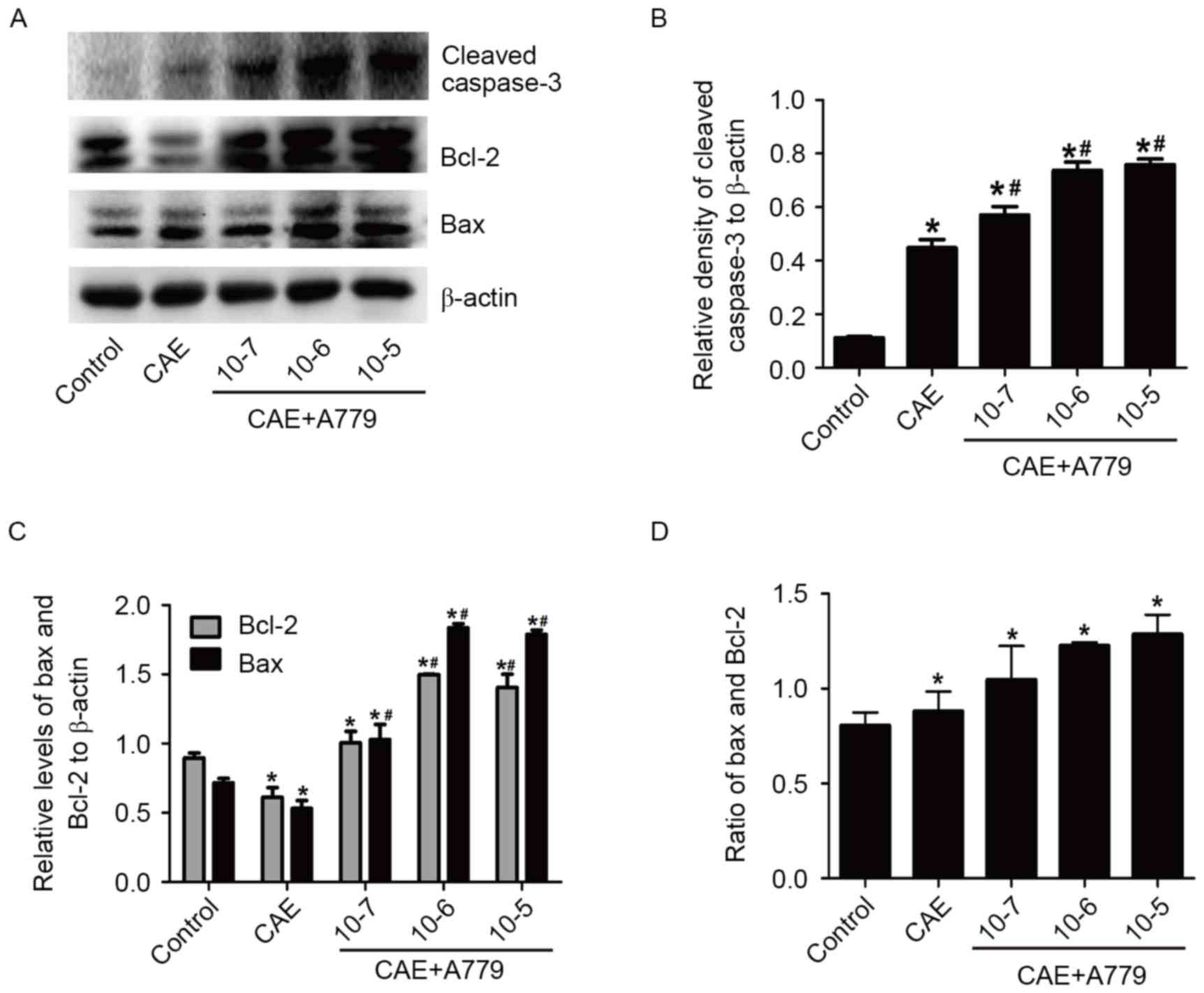|
1
|
Liu B, Huang J and Zhang B: Nobiletin
protects against murine l-arginine-induced acute pancreatitis in
association with downregulating p38MAPK and AKT. Biomed
Pharmacother. 81:104–110. 2016. View Article : Google Scholar : PubMed/NCBI
|
|
2
|
Fu Q, Qin T, Chen L, Liu CJ, Zhang X, Wang
YZ, Hu MX, Chu HY and Zhang HW: miR-29a up-regulation in AR42J
cells contributes to apoptosis via targeting TNFRSF1A gene. World J
Gastroenterol. 22:4881–4890. 2016. View Article : Google Scholar : PubMed/NCBI
|
|
3
|
Cai Y, Shen Y, Xu G, Tao R, Yuan W, Huang
Z and Zhang D: TRAM1 protects AR42J cells from caerulein-induced
acute pancreatitis through ER stress-apoptosis pathway. In Vitro
Cell Dev Biol Anim. 52:530–536. 2016. View Article : Google Scholar : PubMed/NCBI
|
|
4
|
Yuan J, Liu Y, Tan T, Guha S, Gukovsky I,
Gukovskaya A and Pandol SJ: Protein kinase d regulates cell death
pathways in experimental pancreatitis. Front Physiol. 3:602012.
View Article : Google Scholar : PubMed/NCBI
|
|
5
|
Ashour AE, Ahmed AF, Kumar A, Zoheir KM,
Aboul-Soud MA, Ahmad SF, Attia SM, Abd-Allah AR, Cheryan VT and
Rishi AK: Thymoquinone inhibits growth of human medulloblastoma
cells by inducing oxidative stress and caspase-dependent apoptosis
while suppressing NF-κB signaling and IL-8 expression. Mol Cell
Biochem. 416:141–155. 2016. View Article : Google Scholar : PubMed/NCBI
|
|
6
|
Chen K, Chu BZ, Liu F, Li B, Gao CM, Li
LL, Sun QS, Shen ZF and Jiang YY: New benzimidazole acridine
derivative induces human colon cancer cell apoptosis in vitro via
the ROS-JNK signaling pathway. Acta Pharmacol Sin. 36:1074–1084.
2015. View Article : Google Scholar : PubMed/NCBI
|
|
7
|
Mareninova OA, Sung KF, Hong P, Lugea A,
Pandol SJ, Gukovsky I and Gukovskaya AS: Cell death in
pancreatitis: Caspases protect from necrotizing pancreatitis. J
Biol Chem. 281:3370–3381. 2006. View Article : Google Scholar : PubMed/NCBI
|
|
8
|
Nuche-Berenguer B, Ramos-Álvarez I and
Jensen RT: Src kinases play a novel dual role in acute pancreatitis
affecting severity but no role in stimulated enzyme secretion. Am J
Physiol Gastrointest Liver Physiol. 310:G1015–G1027. 2016.
View Article : Google Scholar : PubMed/NCBI
|
|
9
|
Kobayashi C, Yaegaki K, Calenic B,
Ishkitiev N, Imai T, Ii H, Aoyama I, Kobayashi H, Izumi Y and
Haapasalo M: Hydrogen sulfide causes apoptosis in human pulp stem
cells. J Endod. 37:479–484. 2011. View Article : Google Scholar : PubMed/NCBI
|
|
10
|
Ondroušková E and Vojtěšek B: Programmed
cell death in cancer cells. Klin Onkol. 27:(Suppl 1). S7–S14.
2014.(In Czech). View Article : Google Scholar : PubMed/NCBI
|
|
11
|
Abogresha NM, Greish SM, Abdelaziz EZ and
Khalil WF: Remote effect of kidneyischemia-reperfusion injury on
pancreas: Role of oxidative stress and mitochondrial apoptosis.
Arch Med Sci. 12:252–262. 2016. View Article : Google Scholar : PubMed/NCBI
|
|
12
|
Gaddam RR, Ang AD, Badiei A, Chambers ST
and Bhatia M: Alteration of the renin-angiotensin system in
caerulein induced acute pancreatitis in the mouse. Pancreatology.
15:647–653. 2015. View Article : Google Scholar : PubMed/NCBI
|
|
13
|
Ibiş M, Yüksel O, Yilmaz G, Köklü S,
Yilmaz FM, Ertuğrul I, Uçar E and Altiparmak ME: Serum angiotensin
converting enzyme levels in pancreatic diseases.
Hepatogastroenterology. 55:1814–1817. 2008.PubMed/NCBI
|
|
14
|
Ulmasov B, Xu Z, Talkad V, Oshima K and
Neuschwander-Tetri BA: Angiotensin II signaling through the AT1a
and AT1b receptors does not have a role in the development of
cerulein-induced chronic pancreatitis in the mouse. Am J Physiol
Gastrointest Liver Physiol. 299:G70–G80. 2010. View Article : Google Scholar : PubMed/NCBI
|
|
15
|
Colafella KM, Hilliard LM and Denton KM:
Epochs in the depressor/pressor balance of the renin-angiotensin
system. Clin Sci (Lond). 130:761–771. 2016. View Article : Google Scholar : PubMed/NCBI
|
|
16
|
Wang J, Liu R, Qi H, Wang Y, Cui L, Wen Y,
Li H and Yin C: The ACE2-angiotensin-(1–7)-Mas axis protects
against pancreatic cell damage in cell culture. Pancreas.
44:266–272. 2015. View Article : Google Scholar : PubMed/NCBI
|
|
17
|
Gopallawa I and Uhal BD:
Angiotensin-(1–7)/mas inhibits apoptosis in alveolar epithelial
cells through upregulation of MAP kinase phosphatase-2. Am J
Physiol Lung Cell Mol Physiol. 310:L240–L248. 2016. View Article : Google Scholar : PubMed/NCBI
|
|
18
|
Uhal BD, Li X, Xue A, Gao X and
Abdul-Hafez A: Regulation of alveolar epithelial cell survival by
the ACE-2/angiotensin 1–7/Mas axis. Am J Physiol Lung Cell Mol
Physiol. 301:L269–L274. 2011. View Article : Google Scholar : PubMed/NCBI
|
|
19
|
Uhal BD, Nguyen H, Dang M, Gopallawa I,
Jiang J, Dang V, Ono S and Morimoto K: Abrogation of ER
stress-induced apoptosis of alveolar epithelial cells by
angiotensin 1–7. Am J Physiol Lung Cell Mol Physiol. 305:L33–L41.
2013. View Article : Google Scholar : PubMed/NCBI
|
|
20
|
Ma X, Xu D, Ai Y, Zhao S, Zhang L, Ming G
and Liu Z: Angiotensin-(1–7)/Mas signaling inhibits
lipopolysaccharide-induced ADAM17 shedding activity and apoptosis
in alveolar epithelial cells. Pharmacology. 97:63–71. 2016.
View Article : Google Scholar : PubMed/NCBI
|
|
21
|
Yu JH, Lim JW and Kim H: Altered gene
expression in cerulein-stimulated pancreatic acinar cells:
Pathologic mechanism of acute pancreatitis. Korean J Physiol
Pharmacol. 13:409–416. 2009. View Article : Google Scholar : PubMed/NCBI
|
|
22
|
da Silveira KD, Coelho FM, Vieira AT,
Sachs D, Barroso LC, Costa VV, Bretas TL, Bader M, de Sousa LP, da
Silva TA, et al: Anti-inflammatory effects of the activation of the
angiotensin-(1–7) receptor, MAS, in experimental models of
arthritis. J Immunol. 185:5569–5576. 2010. View Article : Google Scholar : PubMed/NCBI
|
|
23
|
Gallagher PE and Tallant EA: Inhibition of
human lung cancer cell growth by angiotensin-(1–7). Carcinogenesis.
25:2045–2052. 2004. View Article : Google Scholar : PubMed/NCBI
|
|
24
|
Ohishi M, Yamamoto K and Rakugi H:
Angiotensin (1–7) and other angiotensin peptides. Curr Pharm Des.
19:3060–3064. 2013. View Article : Google Scholar : PubMed/NCBI
|
|
25
|
Wang Y, Wang J, Liu R, Qi H, Wen Y, Sun F
and Yin C: Severe acute pancreatitis is associated with
upregulation of the ACE2-angiotensin-(1–7)-Mas axis and promotes
increased circulating angiotensin-(1–7). Pancreatology. 12:451–457.
2012. View Article : Google Scholar : PubMed/NCBI
|
|
26
|
Liu R, Qi H, Wang J, Wang Y, Cui L, Wen Y
and Yin C: Angiotensin-converting enzyme (ACE and ACE2) imbalance
correlates with the severity of cerulein-induced acute pancreatitis
in mice. Exp Physiol. 99:651–663. 2014. View Article : Google Scholar : PubMed/NCBI
|
|
27
|
Wang J, Liu R, Qi H, Wang Y, Cui L, Wen Y,
Li H and Yin C: The ACE2-angiotensin-(1–7)-Mas axis protects
against pancreatic cell damage in cell culture. Pancreas.
44:266–272. 2015. View Article : Google Scholar : PubMed/NCBI
|
|
28
|
Liu R, Qi H, Wang J, Wang Y, Cui L, Wen Y
and Yin C: Ulinastatin activates the renin-angiotensin system to
ameliorate the pathophysiology of severe acute pancreatitis. J
Gastroenterol Hepatol. 29:1328–1337. 2014. View Article : Google Scholar : PubMed/NCBI
|



